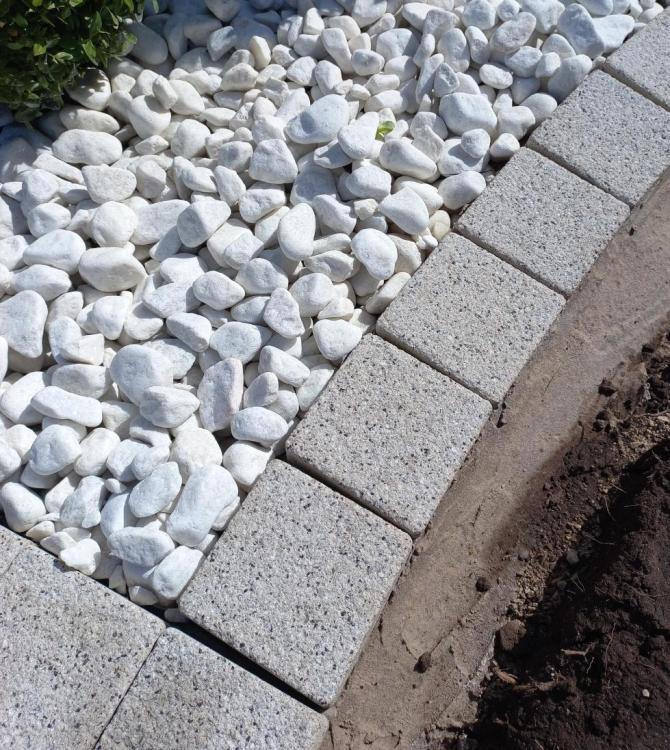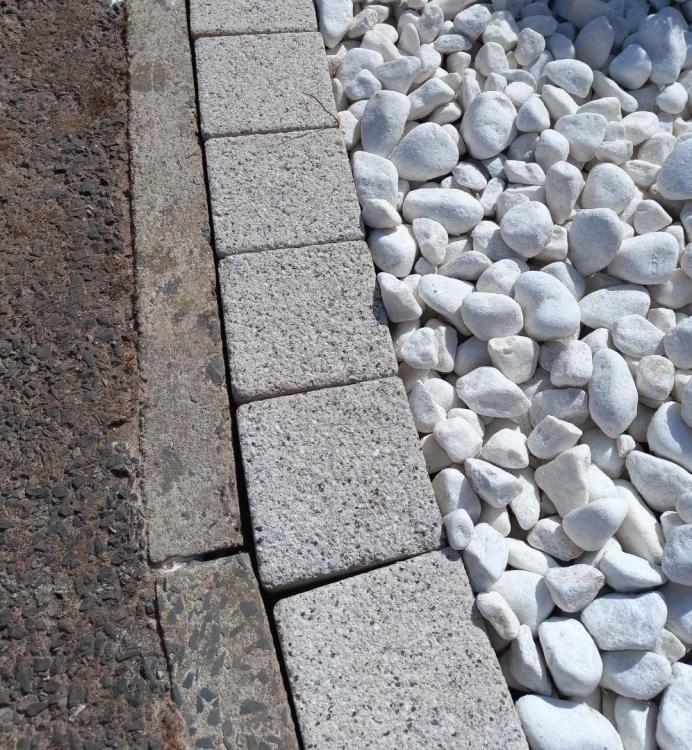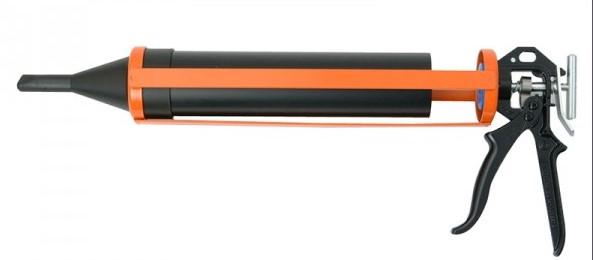Search the Community
Showing results for tags 'pointing'.
-
Morning, I have laid a patio with an Aco channel drain at one end. The slabs next to the drain have about 5mm gap and are about 5mm higher than the side of the drain. I have Sika Fastfix jointing compound to joint the patio. What is the best way to joint the drain gap? Obviously it needs to be filled properly so the water runs into it. Should I just work in the fastfix or use mortar? I have a mortar gun which I guess will make filling it easier. Any recommendations would be good. Thanks Ed
-
Hi, I've been creating a few shrub borders as follows: - 10cm x 10cm x 5cm blocks made of cement/concrete material. - sub-base of MOT, base of mortar. 2 questions: 1 - I have gaps of 1-6mm particularly on the curves. I am concerned about freeze/thaw/repeat in the winter causing damage. The options I've come up with are: - dry mortar brushed/poked in and misted with water. - wet mortar pointed. - a resin base product such as Fugabella piped in. I initially thought of polymeric sand, but that seems to need a pervious base, so I've ruled it out. 2 - What size gaps can I leave alone and not bother filling/pointing? First time I've done anything like this so pointers are much appreciated! Thanks, Steve
-
Just sharing the experience I've had with some of these things to point over 100m2 of paving (512 off 450x450 saxons). I want to share this because I was sceptical of these tools having read many, many bad reviews on the likes of Sfix, Amaz etc.. So sceptical that I started out doing it with a trowel, tuck pointer and pointing iron like I've always done. But I got fed up with that because this job was way bigger than anything I've tackled before. OK, so I give in and try a gun. I figured one that operated like a sealant gun should have the advantage of some extra pressure to squeeze the mortar so I bought a Cox Solpointing Ultrapoint Gun: I Watched all the video's and followed all the tips such as the mix & additive to use but I just couldn't get decent results. It frequently jammed which was the general criticism I was seeing of all mortar guns. I even sifted the sand to remove any tiny stones as it always seemed to get hung-up on these. Then no amount of pressure on the trigger would 'push through' so the whole thing had to be emptied and cleaned. The enormous pressure often resulted in squeezing all the water out of the mortar and back up the tube! So I gave up and went back to the trowel in disgust. For about a week. During that time I had plenty of time to think about it, while troweling away, and realised that the relatively small nozzle wasn't helping so I had a look again and found some with a wide rectangular slot: Image removed at request of copyright owner. If you want to see it you might find it on the companies web site it is the one with paving slabs. I figure that if I could get it to work it would be worth it so I bought one of these too. This time it went better but I was still getting regular clogging. As before, no amount of pressure would shift it. But I could actually do ah few slabs before having to dismantle it - so I persisted. The usage tips for these made it clear that the mix should be thorough and that was better than just making it sloppy. So I began making the smallest batch of mortar I could in my cement mixer (a 14L bucket of sand 4:1). Leaving this running for a good 30 minutes, with plenty of plasticiser and the mix was super-smooth. Before I'd been doing it in a bucket with a paddle on a cordless drill. This smoother mix helped and I could get maybe 10 slabs done before clogging, so by now I'm thinking it out like crazy because I can see this being a great time saver. What I began to realise is that the clogging was always happening when the joint was shallower than the depth of the slab due to the bedding mortar having splurged up when laying. In this case the mortar was 'grounding out' too soon as it was extruded resulting in it not being able to flow sideways - bunching up directly below the nozzle. In this situation applying more pressure would just compress it until it clogged altogether again. SO the 'trick' was to always apply very little force and to move on quickly if it were to show any resistance because the joint was probably too shallow. I got used to pressing down on the plunger with just my fingers, not the palm of my hand, to limit the pressure. Of course raking all the joints before filling them is obviously a good idea but some would inevitably be missed. Now I could use the gun continuously (only stopping to clean it by plunging in a bucket of water at each fill) and made such a lot of progress that I was mixing batches of 28 Litres (with slightly sharp sand) and having the time to gun it all in (this is with SBR in the mix which makes it go off pretty quick). Still took a couple of weeks but I think it would have bee more than double that without the gun. Of course by the time I'd nearly finished I was even quicker at it! TBH I was quite sad when there was no more left to do ? Anyway, I wanted to relate all this because it could save someone a lot of time, money and effort.
-
Hi everyone, I’m wondering whether to finish my brick slips (called Old Water Mill) in bucket or recessed pointing. They are an old style and very irregularly shaped (see pic), what style would lend itself best to these bricks? Many thanks.
- 35 replies
-
- pointing
- recessed pointing
-
(and 1 more)
Tagged with:







